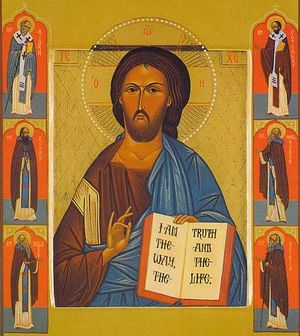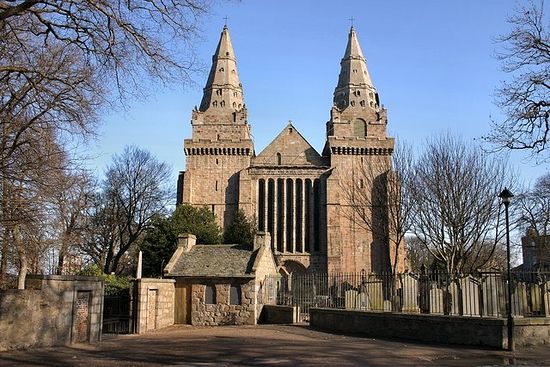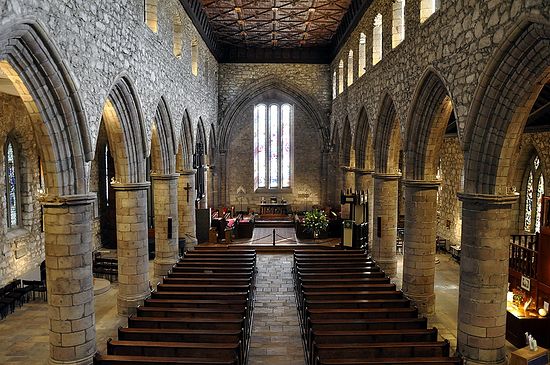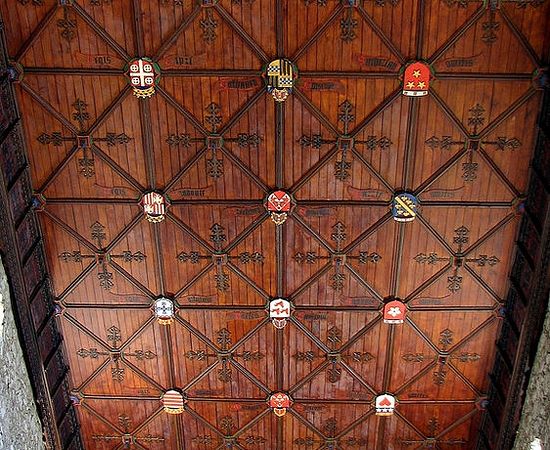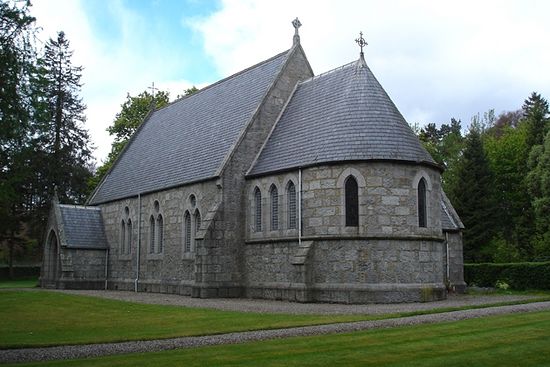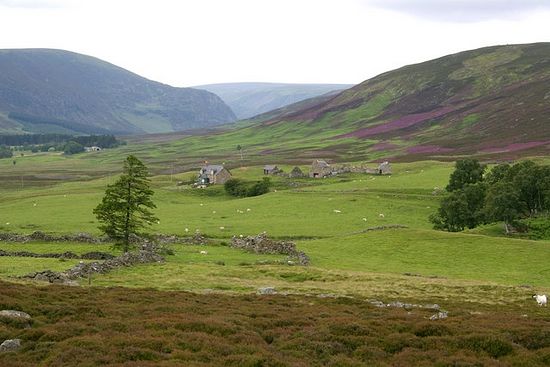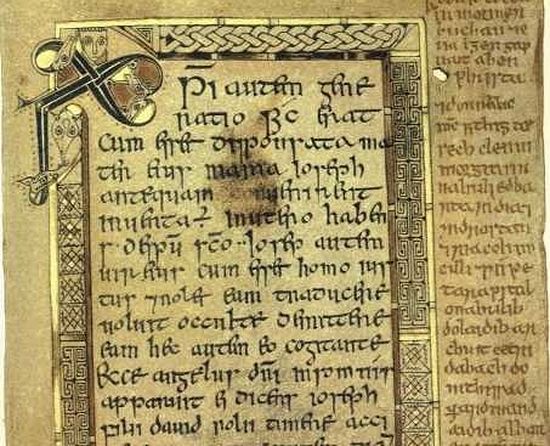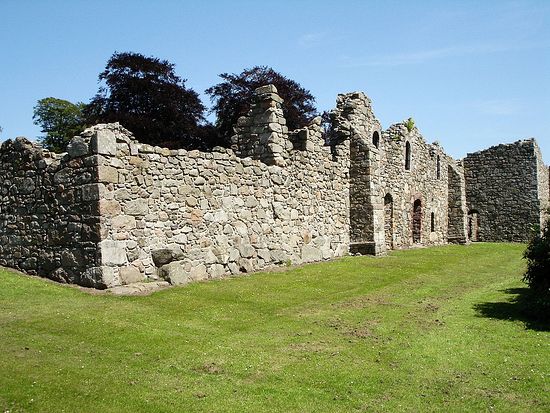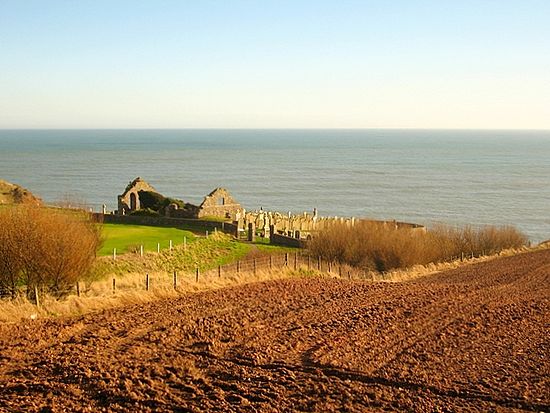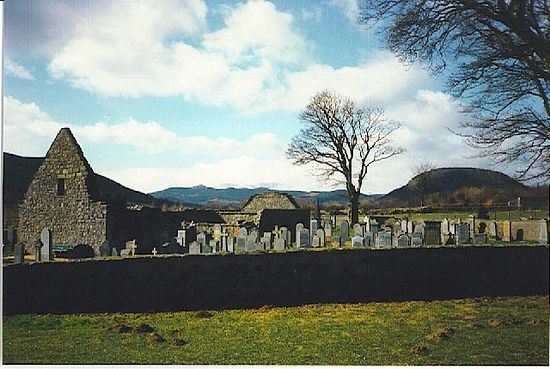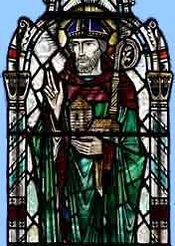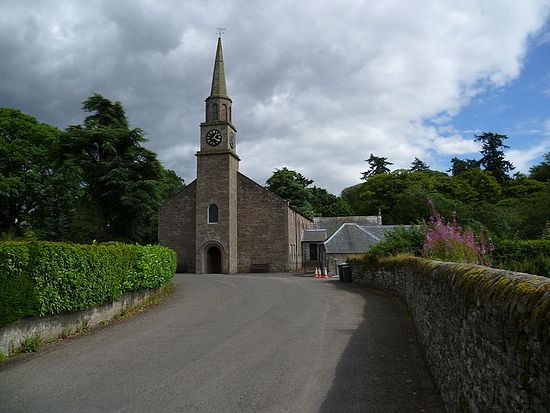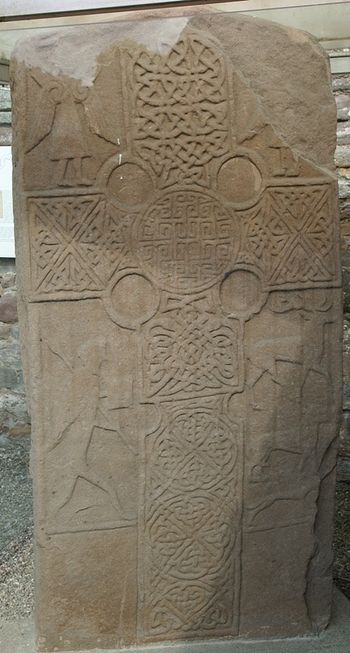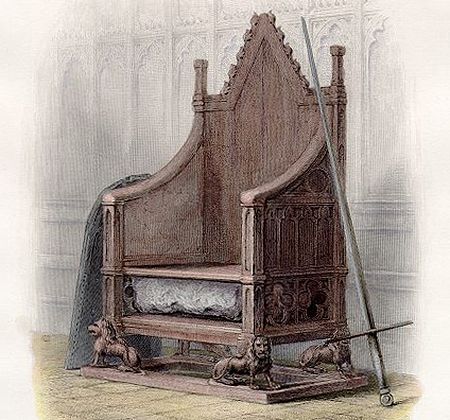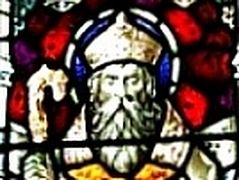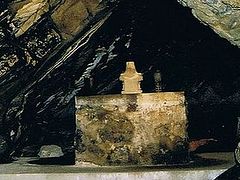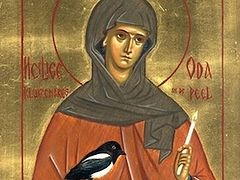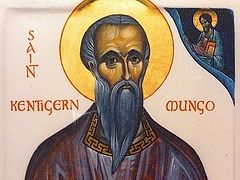Scotland forms the northernmost part of the island of Great Britain. It also has some 800 offshore isles, especially to the west, which are divided into several groups: the Hebrides, Orkney, and the Shetlands. Scotland is considerably more sparsely populated than England, and the spirit of its past still can clearly be found in parts of it. Scotland is dominated by the Highlands in the north and the Lowlands in the south. It has many picturesque mountains, numerous lochs (lakes), glens (narrow mountain valleys), heaths and medieval castles. It has a very indented coastline; in general the Scottish landscape can be characterized as austere (even ascetic) and beautiful at the same time.
From about 500 BC, the territory of Scotland was populated by the Celtic tribe of the Picts. It formed the pagan kingdom of Pictland which was situated mainly between the Firth of Forth and the Firth of Clyde (this part of Scotland was often called Caledonia, from the word ‘Celt’). From the fifth century AD on, western Scotland was colonized by a Celtic people called the Scots. They came from northern Ireland and founded the kingdom of Dalriada. Though originally small, Dalriada finally came to control the whole territory, giving their name to it, and the unified kingdom of Scotland was eventually established in the eleventh century.
We do not know when Orthodoxy first came to Scottish soil. The first recorded evangelizer of the southern Picts is the Romano-British St. Ninian, who founded his main monastery in southwest Scotland at Whithorn. This was the area where the future St. Patrick, the Romano-British evangelizer of northern Ireland was born. Then there was St. Kentigern Mungo (Mungo meaning “the beloved”, who preached in the Strathclyde region, founded Glasgow and established the Church in Cumbria in what is now northwest England. But the most fruitful and centralized mission in Scotland came by St. Columba (called locally Columcille), who sailed with his twelve disciples to the isle of Iona in the Inner Hebrides in 563 and founded his famous monastery. From there, through St. Columba himself, his immediate disciples and the disciples of his disciples, Orthodoxy spread all over Scotland and even far beyond.
The Christian Church and monasticism developed in Scotland on the Irish model. The Christianization of Scotland continued till the eighth century, and despite the recurring pagan reaction, it was very successful. From the eighth century, the Culdees (members of an Irish ascetic movement to restore the spirit of olden days) settled in parts of Scotland and founded their monasteries. The Church with its Irish structure and organization existed there until the eleventh century when it was abolished by Margaret of Scotland (1046-1093) who introduced Roman Catholicism. During the early Orthodox period, Scotland produced dozens and dozens of saints, preachers, hermits, holy priests and bishops, abbots and abbesses, martyrs and rulers. Unfortunately, the early Lives of most of the Celtic saints were lost in the late Middle Ages and we now know very little about the majority of numerous saints who lived in Scotland. In many cases we can trust ancient oral traditions and archeological finds more than later Catholic Lives. Nevertheless these saints existed and they keep praying for the Scottish land.
The Reformation in Scotland was more radical than in many other regions of Europe. John Knox reformed the Scottish Church on the pattern of Presbyterian Churches, under the influence of Calvin in Geneva, in 1560, and by 1690 the national Presbyterian Church of Scotland was formed. This Church structure does not even have bishops and the veneration of holy objects is strongly discouraged. So it is a true miracle that some ancient relics did survive in Scotland, especially in the isles. Now let us recall several saints whose missionary and pastoral labors extended as far as the Aberdeenshire region in the north-east of Scotland.
Holy Hierarch Machar of Aberdeen
Commemorated: November 12/25
Most of what we know of St. Machar (also Mochumma) comes from the Aberdeen Breviary, which was composed late in the fifteenth—early sixteenth centuries. This saint lived in the sixth century. He may have been a son of Fiachna, a Prince of Ulster in Ireland, and baptized by a saint named Colman. Later Machar became a disciple of St. Columba in Iona where they labored together. Meanwhile, St. Machar is not listed among the twelve disciples who landed together with Columba in Iona in 563. An old tradition says that St. Machar then founded many churches in the Isle of Mull near Iona (remarkably, the first Orthodox monastic community in Scotland in the past 1000 years is to be established on Mull). St. Machar converted many Scots to Christ and performed miracles, for example, he healed seven lepers. It was said of this saint that he “preached in central Scotland, converted many inhabitants to Christ, eradicated the cults of pagan gods and destroyed many idols.” With time the saint was sent together with a group of disciples to the northeast of Scotland—to evangelize the Picts in what is now Aberdeenshire.
The first recorded missionary among the Picts in that area had been St. Ternan in the fifth century, who was a disciple of St. Ninian. The missionary efforts of St. Machar in Aberdeenshire were very successful. They must have been very difficult at the same time, as the saint needed good interpreters to work with the Picts. He most probably received his episcopal see in what is now the city of Aberdeen. He built many churches in the district, including the famous cathedral at Old Aberdeen in about 580. According to a legend, St. Columba told Machar to found the church in the place where the River Don bends and takes the shape of a bishop’s crozier. The saint of God found that place at Aberdeen and built the cathedral church on that spot. Later this cathedral was dedicated to St. Machar. St. Machar may also have lived as a hermit near the present-day village of Aboyne in Aberdeenshire on the River Dee in a secluded place. Three places in the area were named after him: St. Machar’s well, St. Machar’s cross and St. Machar’s “chair” (a rock).
The center of veneration of St. Machar is the city of Aberdeen – a seaport and an important center for the North Sea oil industry. A new Norman Cathedral dedicated to St. Machar was built there in 1131. Since the establishment of Presbyterianism in Scotland this huge cathedral has been used in practice as a parish church. It is dedicated to our saint to this day and attracts pilgrims. The Cathedral is built mainly of granite. Among its treasures: a unique seventh or eighth century Celtic cross, part of a twelfth-century cross, beautiful stained glass windows, splendid carvings, with numerous coats of arms of kings and bishops on its ceiling. It is known that the left arm of William Wallace (c. 1270-1305) is buried in the walls of this cathedral. Wallace, a Scottish national hero, was the leader of the resistance to King Edward I. However, he was executed by hanging in 1305 and his quartered body parts were sent to different sites in Scotland, thus his arm ended up in Aberdeen.
Water from a holy well of St. Machar near this Cathedral was formerly used for baptisms. There is a small Russian Orthodox community in honor of St. Machar in Aberdeen, which belongs to the Diocese of Sourozh – it meets occasionally at the University Chaplaincy and King’s College Chapel. Apart from the Presbyterian St. Machar’s Cathedral, Aberdeen has an Episcopal and a Catholic Cathedral. There are a number of other churches dedicated to St. Machar around Aberdeen. One of them is in Bucksburn in a suburb of Aberdeen (the Episcopal Church). Another St. Machar’s Church is in the village of Ranfurly in Renfrewshire in the western central Lowlands.
Venerable Drostan of Deer
Commemorated: July 11/24
St. Drostan lived late in the sixth to early seventh centuries. Among the sources which mention him are the tenth-century Book of Deer and the Aberdeen Breviary, mentioned above. He was born in Ireland and became a close friend of St. Columba of Iona, and one source claims that St. Columba was even his uncle. St. Drostan would often accompany the holy enlightener of Scotland in the latter’s missionary journeys. This holy man eventually became one of the founders and first abbot of the great monastery of Deer in Aberdeenshire (now the village of Old Deer in the county of the same name). With time Deer Abbey grew into a significant monastic and missionary center, gaining royal Pictish support as well.
Thanks to the influence of St. Drostan a large number of churches were erected near the coast of the inlet of Moray Firth in northeastern Scotland. Many years later the faithful persuaded Drostan to become a new abbot of Holywood Monastery but soon afterwards, feeling a call to lead the solitary life of a recluse, he left it and retired far to the north – to Glen Esk near the River North Esk. A parish church approximately on that site is dedicated to our saint to this day. This church is Episcopal, and its exact location is Tarfside.
Soon the poor, the sick and the needy began to flock to the ascetic on whom God bestowed the gift of performing miracles. There is, for instance, evidence that St. Drostan restored the eyesight of a priest called Simon. The Venerable Drostan reposed in the Lord probably in about 610. Some called him one of the apostles of Scotland. His holy relics rested in a stone coffin at the Aberdour church, to the south of the Moray Firth coast, and many miracles occurred. Now this is the village of New Aberdour, where the church was always considered to be one of the earliest in Scotland, originally built by Sts. Columba and Drostan. In the nineteenth century, the Old Aberdour Kirk of St. Drostan was closed and a new parish church was built in the village. This exists to this day. Now the well-preserved ruins of the old church that once held the relics of Drostan survive: its earliest fabric is from the sixteenth century. The holy well of St. Drostan still exists nearby.
In the tenth century at the Monastery of St. Drostan in Deer, the unique Gospel called “The Book of Deer” was created in Latin with some Old Irish and Scottish Gaelic additions. This rare and precious treasure survives to this day. The Book of Deer contains the earliest surviving Gaelic text in Scotland. The manuscript is illuminated, it was written on vellum probably by the same scribe. It contains the whole text of the Gospel of John, fragments of the other three Gospels, the Creed of the Apostles, fragments of the Old Irish Liturgy, and mentions some thirteenth-century charters. It is presumed that the manuscript was intended for private and not public use. Since 1715, the Book of Deer has been in the possession of the University of Cambridge Library. This priceless relic was presented to the university together with the collection of a Bishop of Ely by King George I.
As for the greatest abbey founded by Drostan in Deer, it flourished for several centuries. In the thirteenth century a new Catholic Cistercian Monastery of the Mother of God was founded close to this site and it existed until the Reformation. Today there are two villages in the area: those of Old Deer and New Deer lying seven miles from each other. Nothing is left of the original Celtic monastery of St. Drostan, but there are ruins of the Cistercian monastery in Old Deer. The ruins are located half a mile west of the original St. Drostan’s Abbey. The village’s main street is dominated by the church known as New Kirk. It was built in the 1780s to replace a much older church (Old Kirk) the origins of which may be connected with St. Drostan directly. Ruins of the Old Kirk lie next to the New Kirk. As for New Deer village, it once had a chapel built by the Cistercian abbey which no more exists.
St. Drostan is also closely associated with the village of Aberlour in the Moray council area in northern Scotland, surrounded by extremely picturesque landscapes. According to tradition, the saint once had a chapel and a holy spring there and used its water to baptize the local population. In the nineteenth century a distillery for producing single malt whisky appeared in Aberlour (Scotland, among other things, is famous for producing high-quality whisky and biscuits) and St. Drostan’s holy well became a source for the distillery! It is not the only case in Scotland when an ancient pure holy well has become a source for a whisky distillery. Interestingly, Aberlour has for centuries also produced the fine “Walkers” shortbread. An Episcopal Church of St. Drostan can also be found in Insch in Aberdeenshire.
Holy Hierarch Nathalan of Tullich
Commemorated: January 8/21
St. Nathalan (born in the early seventh century, died 678) hailed from a noble family in eastern Scotland. Deciding to dedicate his life to the service of God, he distributed his large estate among the poor. After that the saint became especially famous for the fact that he earned his living by ploughing up the land, “which brings you closer to Divine contemplation.” St. Nathalan used to say that work in the field was in some sense a sort of penance for him. The saint cultivated the land and grew vegetables, feeding the people during a disastrous famine. He combined his labors in the field with ascetic labors: he continually prayed, fasted and led a solitary life in utter poverty. At the same time he excelled in having a profound knowledge of both secular and Divine sciences.
St. Nathalan successfully preached the Word of God to pagans. On becoming a bishop in Scotland (probably near Aberdeen), the holy bishop settled in Tullich not far from what is now Aberdeen, where he continued to earn his living by the labor of his hands, living in poverty and distributing all his earnings to paupers. The original name of Tullich was Tulachnathlak which meant “the knoll of Nathalan”. (After the Reformation the saint’s name was removed from the place-name and it was renamed Tullich). St. Nathalan built many churches, for example in Tullich, Bothelim and Colle. As a bishop the saint of God actively struggled against Pelagianism, and it is much to the credit of Nathalan that this heresy did not affect Scotland. St. Nathalan of Tullich is mentioned in early Irish calendars. He is still venerated in the Scottish county of Aberdeenshire of which he is one of the chief apostles and patrons.
After the repose of Nathalan his relics were enshrined at the church of Tullich, where a great many miracles occurred. There is a typically Roman Catholic legend telling how this saint became a bishop. Once a violent wind ruined the ascetic’s harvest and the hermit began grumbling at God for the misfortune that befell him. At once realizing his sin, he with tears repented from the bottom of his heart. The saint put one of his feet and his arms into irons and threw the key into the River Dee. On doing this he resolved to make a pilgrimage to Rome to atone for his sin. As soon as he reached the gates of Rome a youth who was selling seafood offered him a fish – and the key to the irons was found in its stomach. Learning this, the Pope of Rome decided to consecrate St. Nathalan a bishop.
In Tullich, pilgrims can still visit the ruins of the church (now called Tullich Kirk) that was once erected by Nathalan. To the north of the town of Stonehaven in Aberdeenshire survive the ruins of a chapel in honor of Sts. Mary and Nathalan – the saint may once have built a church there himself. The structure is also known as “Cowie Chapel”. It overlooks the North Sea and is regarded as one of the oldest ecclesiastical structures in the area. There is also the ancient Coull Kirk in Coull, Aberdeenshire, which was originally built by Nathalan.
Saint Fergus of Scotland
Commemorated: November 27/December 10
St. Fergus (in Latin Fergusianus) was born in the seventh century. According to one version, his motherland was Ireland, but according to another version he was born in Scotland, as his name is believed to be of a Pictish origin. Becoming a bishop-missionary, he preached the Good News to the Scottish Picts. Residents of the historic districts of Perthshire (now Perth and Kinross), Caithness (now Highland), Buchan, and Forfarshire (now Angus) consider him their apostle. Early traditions and present church dedications associated with this saint correlate with what is written of him in the Aberdeen Breviary.
He settled near the Roman camp of Strageath on the River Earn in eastern Scotland and founded three churches in the region, then proceeded to erect two churches in the Caithness district.
It is likely that the holy hierarch built churches in the town of Banff (present-day Aberdeenshire), along with Inverugie (Aberdeenshire) and Dyce (now within the city of Aberdeen). In Dyce there is a very ancient chapel in honor of St. Fergus, and at the present time local people try to maintain it in good condition, though it is roofless. Not long ago seventh-century stones and very old crosses were discovered in the neighbourhood, and some of them are kept within the chapel. At least one of the stones is a part of a Celtic missionary cross. According to some sources, St. Fergus may have taken part in an important Church Council in Rome in 721. That Council condemned all marriages that contradicted the canons, and sorcery. The saint reposed between 720 and 730 and was buried in the village of Glamis (present-day Angus council area). An arm relic of the saint was later transferred to Aberdeen.
There is a church of St. Fergus in Glamis, and nearby very early stones can be found—one of them is called “the Pictish stone.” Glamis is also famous for the fact that Elizabeth, the Queen Mother (1900-2002), the mother of the present Queen Elizabeth II, spent most of her childhood in the local castle. Recently St. Fergus’ well was restored in this village and the saint’s cave nearby is preserved too. Close to Glamis there is the ancient village of Eassie. It has an old and roofless unused parish church of St. Fergus. It was last rebuilt in the sixteenth century but in the nineteenth century was left derelict, while a new church was built not far away. The old Eassie church has a unique treasure: an early “Eassie Pictish stone”, which is a cross slab with sculpted depictions of angels, people and animals along with traditional Pictish features.
During the reign of King James IV of Scotland (1488-1513) the head relic of St. Fergus was translated to Scone Abbey (now in the Perth and Kinross council area) and laid in a silver casket. From that time on this abbey became a popular pilgrimage destination. In 1559 the abbey was attacked by a mob of radical Protestants, however monastic life continued on this site till as late as 1640. Now Scone is divided into two villages: Old and New Scone, and nothing remains of the abbey.
The history of the famous “Scone Stone”, or “the Stone of Destiny”, or “the Coronation Stone” is associated with Scone. There is a quite untrue but still curious medieval legend about the origin of this stone. According to the legend, this is the very stone on which Patriarch Jacob of the Old Testament once fell asleep and saw angels ascending and descending on the Ladder. Later it allegedly was transferred to Egypt, from there – to Ireland and finally to Scotland. For several centuries Scottish monarchs were crowned on this very stone, which was kept at Scone Abbey (Scone was of a great importance in early Scotland and at one time was the capital of the Pictish Kingdom). In 1296, King Edward I of England, who annexed Wales and attempted to conquer Scotland, captured the unique stone and took it to Westminster Abbey in London. Over the following seven centuries most of English monarchs (and kings and Queens of Great Britain) were crowned on this stone, which had been fitted into the coronation chair at Westminster Abbey. In 1950 there was an attempt by four Scotsmen to steal the stone. The last monarch to have been crowned on the “Scone Stone” was Elizabeth II in 1953. In 1996 the “Scone Stone” was returned to Scotland and placed in Edinburgh Castle where it remains to this day. (It will be returned to Westminster Abbey for each future coronation). There is also a replica of this mysterious ancient stone at Scone Palace, which was restored in modern times.
St. Fergus is venerated as the heavenly patron of Glamis and of the town of Wick in Highland, one of the northernmost towns of Scotland, where the holy bishop founded a church or a monastery. In Aberdeenshire there is a village called St. Fergus where this saint most probably preached. Finally, the village of Halkirk on River Thurso (Highland) is linked to our saint who built a church there. In ancient times there existed a cathedral in Halkirk, which in the thirteenth century was transferred to Dornoch. Today there is a ruined Halkirk Kirk in the village, which once was used as a chapel of the bishop’s palace. Its patron-saint was either St. Fergus or St. Catherine.
Holy Fathers Machar, Drostan, Nathalan and Fergus, pray to God for us!


